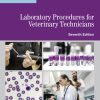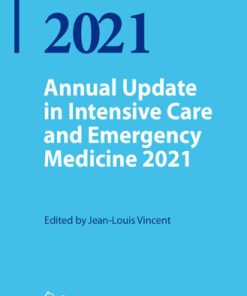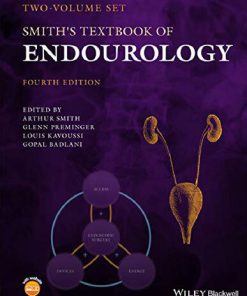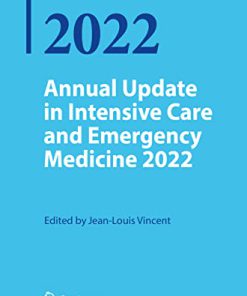Textbook of Critical Care 7th Edition by Jean Louis Vincent, Edward Abraham, Frederick A Moore, Patrick M Kochanek, Mitchell Fink ISBN 9780323376389 032337638X
$50.00 Original price was: $50.00.$25.00Current price is: $25.00.
Textbook of Critical Care 7th Edition by Jean Louis Vincent, Edward Abraham, Frederick A Moore, Patrick M Kochanek, Mitchell Fink – Ebook PDF Instant Download/Delivery: 9780323376389 ,032337638X
Full download Textbook of Critical Care 7th Edition after payment
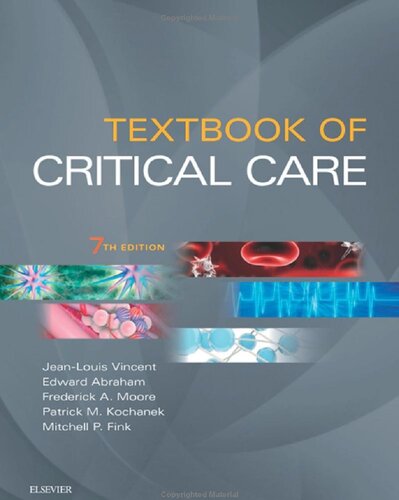
Product details:
ISBN 10: 032337638X
ISBN 13: 9780323376389
Author: Jean Louis Vincent, Edward Abraham, Frederick A Moore, Patrick M Kochanek, Mitchell Fink
Comprehensive, concise, and readable, Textbook of Critical Care, 7th Edition, brings you fully up to date with the effective management of critically ill patients, providing the evidence-based guidance you need to overcome a full range of practice challenges. Drs. Jean-Louis Vincent, Edward Abraham, Frederick A. Moore, Patrick Kochanek, and Mitchell P. Fink are joined by other international experts who offer a multidisciplinary approach to critical care, sharing expertise in anesthesia, surgery, pulmonary medicine, and pediatrics. This highly acclaimed text offers ICU clinicians a new understanding of the pathophysiology of critical illness and new therapeutic approaches to critical care.
Textbook of Critical Care 7th Edition Table of contents:
Part 1 Common Problems
1 Sudden Deterioration in Neurologic Status
Impairment in Consciousness
Stroke and Other Focal Neurologic Deficits
Seizures
Generalized Weakness and Neuromuscular Disorders
Neurologic Complications of Procedures and Treatments
Evaluation of Sudden Neurologic Change
Monitoring for Neurologic Changes
Annotated References
References
2 Agitation and Delirium
Agitation
Delirium
Pathophysiology
Assessment
Management
Summary
Annotated References
References
3 Management of Acute Pain in the Intensive Care Unit
Acute Pain Assessment
Options for Acute Pain Therapy
Opioid Tolerance and Opioid-Induced Hyperalgesia
Annotated References
References
4 Fever
References
5 Very High Systemic Arterial Blood Pressure
Pathophysiology
Clinical Presentation
Antihypertensive Medications
Annotated References
References
6 Low Systemic Arterial Blood Pressure
Initial Evaluation
What Is the Cause?
Treatment
Annotated References
References
7 Tachycardia and Bradycardia
Tachycardia
Bradycardia
Annotated References
References
8 Arterial Hypoxemia
Causes of Arterial Hypoxemia
Measures of Arterial Hypoxemia
Management of Arterial Hypoxemia
References
9 Acute Respiratory Failure
Components of the Respiratory System
Pathophysiological Processes Leading to ARF
Classification of ARF
Diagnostic Work-up
Management
Conclusion
References
10 Pulmonary Edema
Background and Epidemiology of Pulmonary Edema
Pathophysiology of PE
Establishing the Etiology of PE in the Clinical Setting
Diagnosis and Differential Diagnosis of Pulmonary Edema
Management of PE
References
11 Polyuria
Classification
References
12 Oliguria
Definitions and Epidemiology
Pathophysiology
Diagnostic Approach to Oliguria
Treatment of Oliguria
Conclusion
Annotated References
References
13 Hypernatremia and Hyponatremia
Hypernatremia
Hyponatremia
References
14 Hyperkalemia and Hypokalemia
Hyperkalemia
Hypokalemia
Annotated References
References
15 Hyperphosphatemia and Hypophosphatemia
Phosphate Homeostasis
Hypophosphatemia
Hyperphosphatemia
Annotated References
References
16 Hypomagnesemia
Cellular Physiology and Metabolism of Magnesium
Prevalence and Etiology of Hypomagnesemia in Patients in the Intensive Care Unit
Clinical Signs and Symptoms of Hypomagnesemia
Treatment of Hypomagnesemia
References
17 Hypocalcemia and Hypercalcemia
Calcium Physiology and Metabolism
Hypocalcemia in Critically Ill Patients
Hypocalcemia in Sepsis and Pancreatitis
Signs and Symptoms of Hypocalcemia
Treatment of Hypocalcemia
Hypercalcemia
Annotated References
References
18 Hypoglycemia
Definition of Hypoglycemia
Incidence of Hypoglycemia in the Critically Ill
The Glycemic Domains and the Influence of Preexisting Diabetes Diagnosis on Outcomes in the ICU
Glycemic Goal in the ICU
Measurement of Blood Glucose in the ICU
Risk Factors and Barriers to Recognition of Hypoglycemia in the ICU
Outcomes of Hypoglycemia in the Critically Ill
Physiology and Symptomatology of Hypoglycemia
Management of Hypoglycemia
Conclusion
Annotated References
References
19 Hyperglycemia
Definition of Hyperglycemia
Stress-Induced Hyperglycemia
Diabetic Versus Non-Diabetic Blood Glucose Management in the ICU
Landmark Investigations Studying Hyperglycemia in the Critically Ill Patient
Glucose Monitoring in the ICU
The Future
References
20 Anemia
Epidemiology
Etiology
Laboratory Evaluation of Anemia in the Intensive Care Unit
Management
Adverse Effects of Transfusion
Annotated References
References
21 Thrombocytopenia
Platelet Physiology and Regulation of Platelet Count
Etiology of Thrombocytopenia
Diagnostic Approach to Thrombocytopenia
Platelet Transfusion
Thrombocytopenia in Special Clinical Scenarios
References
22 Coagulopathy in the ICU
Mechanisms of Hemostasis
Inflammation and the Development of Coagulopathy
Diagnostic Methods and Clinical Manifestations
Treatment of Coagulopathy
Summary
References
23 Jaundice
Differential Diagnosis
References
24 Gastrointestinal Bleeding
Upper GI Hemorrhage
LGI Hemorrhage
References
25 Ascites
Definition and Diagnosis
Pathophysiology
Management
Prognosis and Complications
Annotated References
References
26 Acute Abdominal Pain
Initial Approach
Differential Diagnoses Based on Location
References
27 Ileus
Pathophysiology
Clinical Features
Treatment
Prevention
Annotated References
References
28 Diarrhea
Criteria
Pathophysiology
Clinical Consequences of Diarrhea
Diagnosis
Treatment
Conclusion
Annotated References
References
29 Rash and Fever
Community-Acquired Rash and Fever
Nosocomial-Acquired Rash and Fever
Annotated References
References
30 Chest Pain
Initial Approach
History
Physical Examination
Diagnostic Adjuncts
Differential Diagnoses
Conclusion
Annotated References
References
31 Biochemical or Electrocardiographic Evidence of Acute Myocardial Injury
Electrocardiographic Evidence
CK-MB and Troponin
Other Biomarkers
References
Part 2 Common Approaches for Organ Support, Diagnosis, and Monitoring
32 Point-of-Care Ultrasound
Ultrasound Physics and Probe Selection
Assessment of Pulmonary Disorders
Additional Areas of Assessment
References
33 Echocardiography
Basics
Standard Views and Anatomy
Hemodynamic Assessment
Circulatory Failure
Specific Evaluation
Future Directions
References
34 Cardiovascular Monitoring
Noninvasive Monitors
Minimally Invasive Monitors
Invasive Monitors
Conclusion
References
35 Bedside Monitoring of Pulmonary Function
Pulse Oximetry
Capnometry
Assessment of Pulmonary Mechanics
Assessment of Breathing Pattern and Central Drive
Annotated References
References
36 Arterial Blood Gas Interpretation
Why Am I Obtaining an Arterial Blood Gas?
Arterial Blood Gas Sampling
Hypoxemia, Hypoxia, and Arterial Blood Gas Analysis
Stepwise Approach to Acid-Base Disorders
Common Acid-Base Disturbances in the ICU
Venous Blood Gas Analysis
Annotated References
References
37 Tracheal Intubation
Airway Management Challenges in the Critically Ill
Training
Indications for Tracheal Intubation
Maximizing Patient Safety During Tracheal Intubation
Intubation Techniques
The Difficult Airway
Conclusion
Disclaimer
References
38 Tracheostomy
Indications
Advantages of Tracheostomy
Complications
Surgical Tracheostomy versus PDT
Surgical Tracheostomy
PDT
Timing of Tracheostomy
Tracheostomy and Safety
Bronchoscopy
US and PDT
Tracheo Training
Acknowledgments
Annotated References
References
39 Mechanical Ventilation
Design Features of Modern Mechanical Ventilators
Adverse Effects of Positive Pressure Mechanical Ventilation
Applying Positive Pressure Mechanical Ventilation
Conclusion
Annotated References
References
40 Renal Replacement Therapy
Technical Aspects of RRT
Initiation of RRT
Choice of Modality of RRT
Special Indications
Annotated References
References
41 Targeted Temperature Management and Therapeutic Hypothermia
Physiology and Pathophysiology
Clinical Evidence and Potential Indications for Temperature Control
Practical Aspects
Cooling Methods
References
42 Extracorporeal Membrane Oxygenation (Venovenous and Venoarterial ECMO)
Technical Aspects
Management of Anticoagulation and Blood Transfusion
ECMO in Respiratory Failure
ECLS in Heart Failure
Weaning From ECMO
Complications
Pediatric ECMO/ECLS
Ethical Considerations
References
43 Nutritional Support in Adults
Nutritional Risk Assessment
Refeeding Syndrome
Enteral Nutrition
Parenteral Nutrition
Caloric Requirements
Protein Requirements
Specific Macronutrients
Specific Micronutrients
Prebiotics and Probiotics
References
44 Nutritional Support in Children
Impact of Physiologic Stress in Children
Nutrition Assessment of the Critically Ill Child
Nutrition Support Recommendations for the Critically Ill Child
Should Nutrition Support be Protocol Driven?
Summary
Annotated References
References
45 Early Ambulation in the ICU
The Physiology of Bed Rest
Neuromuscular Weakness in the ICU
Early Mobilization and Ambulation in the ICU
Implementation and Monitoring
References
46 Role of Early Mobilization in the Prevention of ICU-Acquired Weakness
Clinical Manifestations of ICUAW
Diagnosis of ICUAW
Classification of ICUAW
Risk Factors for ICUAW
Prevention of ICUAW
Conclusion
References
Part 3 Central Nervous System
47 Advanced Bedside Neuromonitoring
Monitoring Neurologic Status
Intracranial Pressure and Cerebral Perfusion Pressure
Jugular Venous Oxygen Saturation
Local or Regional Monitoring
References
48 Coma
Anatomy, Pathology, and Pathophysiology
Differential Diagnosis
Approach to Coma
The Role of Special Investigations
Prognosis
Annotated References
References
49 Use of Brain Injury Biomarkers in Critical Care Settings
Biofluid-Based Biomarkers for Detecting Brain Injury in the ICU
Potential Uses of Brain Biomarkers for TBI Patient Management
References
50 Cardiopulmonary Cerebral Resuscitation
Epidemiology
Restoring Circulation
Aspects of Cardiac Arrest in Specific Situations
Postcardiac Arrest Care to Minimize Brain Injury
Predicting Neurologic Recovery
Rehabilitation
Withdrawal of Life-Sustaining Treatment
Summary
Annotated References
References
51 Delirium
Why Does Delirium Occur in Critical Care Units?
Pathophysiology of Delirium
Clinical Presentations of Delirium
Comorbidities of Delirium
Delirium Tremens as a Model for Severe Agitation
Treatment of Delirium
Prevention of Delirium
Long-Term Outcomes
References
52 Management of Acute Ischemic Stroke
Emergent Stroke Evaluation
Imaging of Acute Stroke
Treatment of Acute Stroke
Summary
Annotated References
References
53 Nontraumatic Intracerebral and Subarachnoid Hemorrhage
Intracerebral Hemorrhage
Subarachnoid Hemorrhage
References
54 Seizures in the Critically Ill
Epidemiology
Classification
Pathogenesis and Pathophysiology
Clinical Manifestations
Diagnostic Approach
Management Approach
References
55 Neuromuscular Disorders in the Critically Ill
The Motor Unit and Its Physiology
Muscles of Respiration
Neuromuscular Disorders
Annotated References
References
56 Traumatic Brain Injury
Pathophysiology
Prehospital Care
Emergency Department Care
Definitive Treatment
Physiologic Monitoring
Medical Treatment
Physical Therapy and Rehabilitation
Penetrating Injuries
Prognosis
Annotated References
References
57 Spinal Cord Injury
Epidemiology
Etiology
Initial Management
Immobilization and Diagnostic Evaluation
Pediatric Spinal Cord Injury
Pharmacotherapy
Hypothermia
Intensive Care Unit Management
Prognostic Factors for Recovery
Research
Conclusion
Annotated References
References
58 Neuroimaging
Methods
Brain
Spinal Cord
Acknowledgments
Annotated References
References
59 Intensive Care After Neurosurgery
Priorities and Goals of Postoperative Neurosurgical Care
Prevention and Management of Systemic Complications After Neurosurgery
Prevention and Management of Neurosurgical Postoperative Complications
Admission Examination and Monitoring in the Intensive Care Unit
Systemic Monitoring: Cardiopulmonary Status, Respiratory Status, and Temperature
Brain Monitoring and Specific Therapeutic Approaches
Neuroprotection
Annotated References
References
60 Key Issues in Pediatric Neurointensive Care
Issues Unique to Pediatrics
Specific Diseases or Conditions
Critical Central Nervous System Infections
Postoperative Neurosurgical Cases
Other Critical Central Nervous System Disorders in Infants and Children
Annotated References
References
Part 4 Pulmonary
61 Patient-Ventilator Interaction
Respiratory Physiology
Patient and Ventilator Variables
Respiratory Drive–Ventilator Trigger Asynchrony
Ventilatory Requirement–Gas Delivery Asynchrony
Inspiratory Timing–Ventilator Cycling Asynchrony
Patient-Ventilator Asynchrony during Pressure Support Ventilation
Total Patient-Controlled Mechanical Support
Proportional Assisted Ventilation (PAV), Proportional Pressure Support (PPS), and Proportional Assisted Ventilation Plus (PAV+)
Neural-Adjusted Ventilatory Assistance (NAVA)
Adaptive Support Ventilation
Annotated References
References
62 Noninvasive Positive-Pressure Ventilation
Rationale
Mechanisms of Action
Indications
Practical Application
Adverse Effects and Complications
Annotated References
References
63 Weaning from Mechanical Ventilation
The Concept of Liberation and Extubation
Mechanisms Explaining Liberation Failure
Prediction of Weaning and Extubation Outcomes
Extubation Failure
Progressive Withdrawal of Mechanical Ventilation
Classification of Weaning
Summary
Annotated References
References
People also search for Textbook of Critical Care 7th Edition:
online textbook of critical care
oxford textbook of critical care 3rd edition
textbook of critical care nutrition
textbook of critical care nutrition pdf
textbook of critical care nursing
Tags: Jean Louis Vincent, Edward Abraham, Frederick A Moore, Patrick M Kochanek, Mitchell Fink, Critical Care
You may also like…
Medicine - Dermatology
Medicine - Clinical Medicine
Smith s Textbook of Endourology 4th Edition Louis R. Kavoussi (Editor)
Medicine - Anesthesiology and Intensive Care
Medicine - Ophthalmology
History - Military History
Foreign Planes in the Service of the Luftwaffe 1st Edition Jean Louis Roba
Medicine - Anesthesiology and Intensive Care
Annual Update in Intensive Care and Emergency Medicine 2022 Jean-Louis Vincent (Editor)
Medicine - Others
Tietz Textbook of Laboratory Medicine 7th edition Nader Rifai

